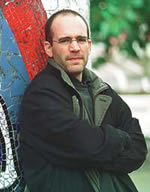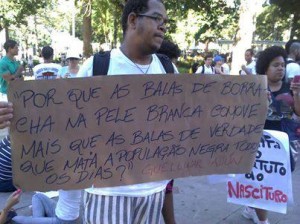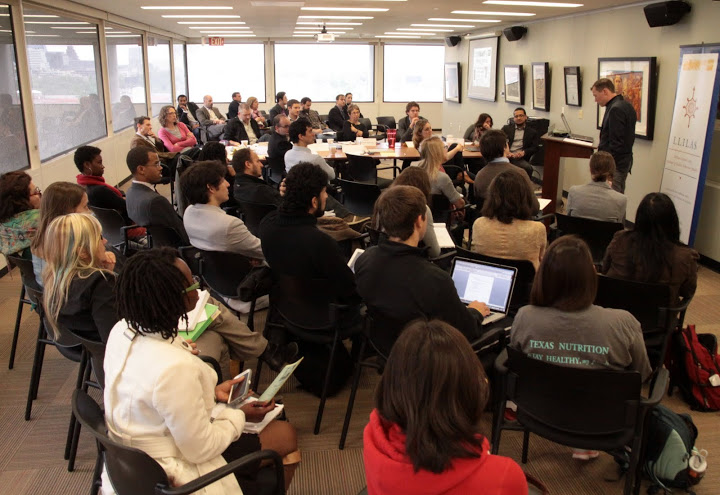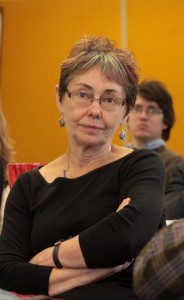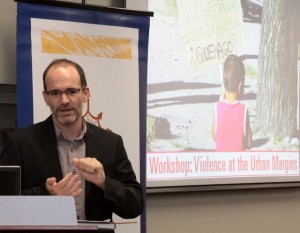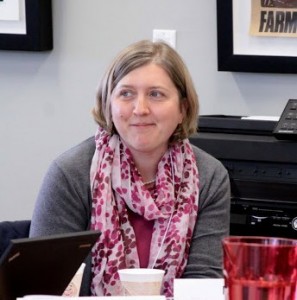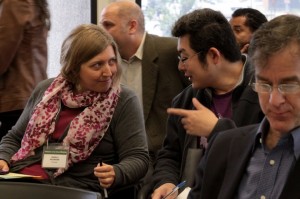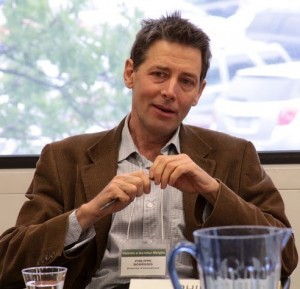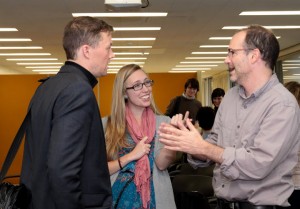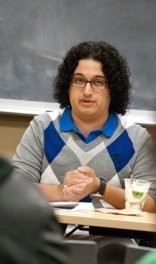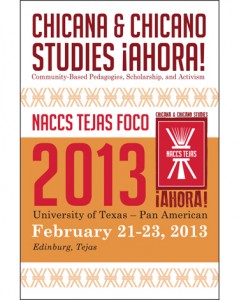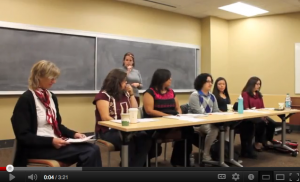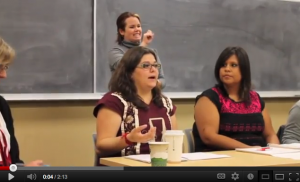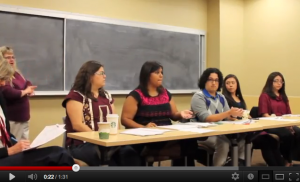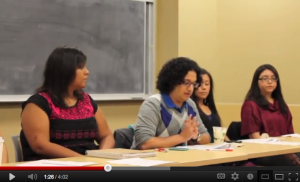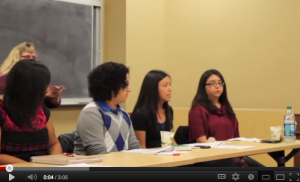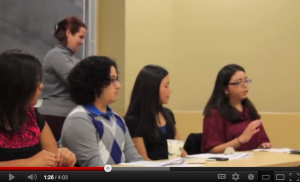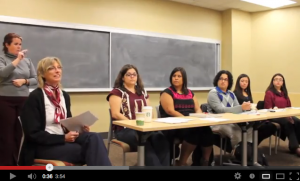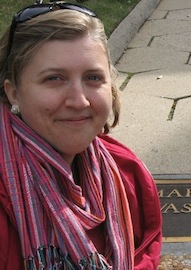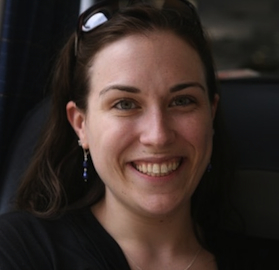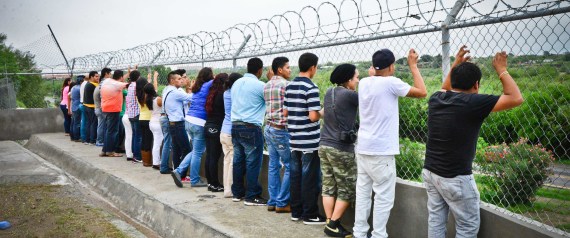
By Michael Young and Eric Borja
Under the Obama administration, nearly two million people have been deported, with no end in sight. NIYA – the National Immigrant Youth Association – is tired of seeing families ripped apart by these deportations. And on Monday September 30th, the same day the government shutdown occurred, 30 undocumented migrants – the Dream 30 – crossed the US-Mexico border at the Laredo, Texas port of entry. This is the second time the organization has successfully organized such an act of civil disobedience – with the first occurring on Monday July 22, 2013 when 9 undocumented migrants (the Dream 9) crossed the US-Mexico border near the Nogales border patrol station. Since the Dream 9, NIYA has successfully crossed 15 undocumented migrants, but 24 of the Dream 30 remain detained.
Our very own Dr. Michael Young has worked closely with NIYA, and was present during the Dream 30 crossing. Below, we present his op-ed piece on the Dream 30 originally published in the Houston Chronicle on October 3rd:
In the middle of last week, they started to arrive in Nuevo Laredo, across the Texas-Mexico border from Laredo.
By the weekend, there were 34 of them gathered in a Catholic shelter for migrants.
Each had a different story of how they had gotten to this point, but they all shared a dream – actually, more of a desperation – to come home.
From the roof of the shelter, they could see the Rio Grande. On the other side of the river: Home.
For three days, they sat in workshops led by Benito, an organizer for the National Immigrant Youth Alliance. They role-played what would happen on Monday. They told their stories to each other. They cried, they laughed, they bonded.
On Monday morning, they embraced in “a burning ring of fire” and took turns jumping into the center telling the group what they meant to each other. They used the word “love” freely. Standing next to them, I believed they meant and felt those words as intensely as a human can.

Who are these people?
In the way they spoke English, in the way they dressed, in their mannerisms, they were just like the kids at my children’s public school in South Austin. They were mostly 20-somethings, but also a few minors. They were gay, straight, jocks, nerds, junior ROTC, evangelical, Catholic, atheist – all raised in the U.S., all undocumented, brought here as young children by their parents, and all unafraid.
Around noon, they gathered at the central plaza in Nuevo Laredo.
“Was this the place that they (the Zetas) shot the mayor, or was it the sheriff?” “Is this the place where they brought the decapitated heads?” The kids put graduation caps and gowns on – the DREAMer uniform. Benito assembled them in a line. He interspersed the innate leaders with the anxious. He put the strongest one in the middle of the line, building a column that would not break.
One last check: Benito touched each one on their shoulders and looked them in their eyes for a long moment, saying not a word. They were ready.
With four pesos in hand, they walked one block north from the plaza to the pedestrian “Bridge No. 1” linking the two Laredos. They paid their toll on the Mexican side. Mexican soldiers stood by letting them cross without a word, barely a glance.
When they got halfway across, the chants began in a call and response. DREAMers who had gathered on the U.S. side of the bridge chanted, “Undocumented!” The crossers responded, “Unafraid!” They got louder.
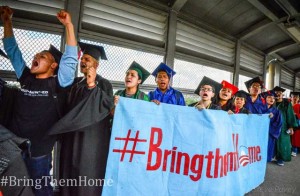
The U.S. Border Patrol agents in boats under the bridge gunned their engines, drowning out the chants for a moment.
A flash of fear spread through the column, but only for a moment. The chants from the U.S. steeled their nerves.
The crowd on the U.S. side called returnees’ names, one by one: “When Javier comes under attack, what do we do? Stand up, fight back! When Alberto comes under attack, what do we do? Stand up, fight back!”
They arrived at the U.S. point of entry, where Border Patrol agents stopped them.
The DREAMers’ lawyer presented boxes of documents – petitions for asylum for each young person. The chants continued.
They stood for a half-hour, maybe more, in the Texas heat and then they were taken into Immigration and Customs Enforcement detention.
I had never seen such a protest – a brilliant, beautiful and heartbreaking protest. In all my years of studying protests, I know of little to compare it to.
Of course, most Americans know nothing of the day’s event. The news cycle has room for only one big story.
That was Monday.
By the next day, the minors had been released on humanitarian parole along with their parents. But 25 remain in ICE detention, now housed in an El Paso facility.
American kids, back in America, but behind guarded walls dressed in prison jump suits.
Their crime? They went back to Mexico to bury loved ones, to care for sick family members, to finish an education they couldn’t finish here, to follow a parent who couldn’t find work.
What they found there is something we all already know, even if some of us won’t admit it: Mexico is not the home of these kids raised in America.
Now they are home and now they must be set free.
The government may be shut down, but its prisons are still at work jailing kids who just want to come home.
Bring them home.
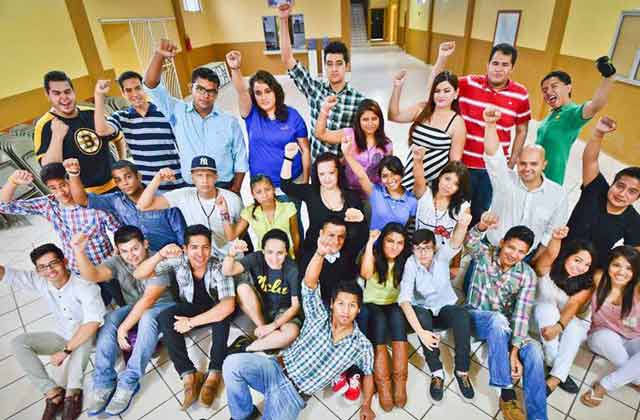
For further information, NIYA’s website can be found at http://theniya.org/ and please visit http://action.dreamactivist.org/bringthemhome/educators/ to sign a petition supporting the DREAMers.

